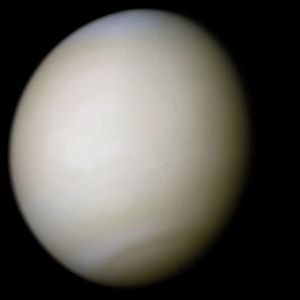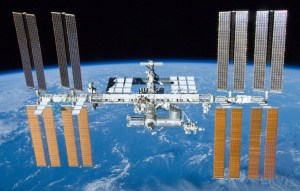Our night sky is full of beautiful and wonderous objects. Our closest celestial neighbors, the planets, are no exception. Planets present beauty and wonder all their own, and are accessible to skywatchers of all skill levels. Some are easy to find, others can be tricky. Some have moons in orbit, others don’t. Most can be seen with the naked eye, and all can be seen with binoculars and telescopes. But the best part of viewing planets are that they’re close to Earth and can exhibit details that can thrill and amaze!
Here are a few general tips for planet viewing. The planets travel in an area in the southern sky called the ecliptic, so named because eclipses occur in this region as the sun and moon both travel in this path. The ecliptic signifies the plane of our solar system, so all of the planets, our sun and moon which lie in the same plane also can be found within the path of the ecliptic in the sky. Therefore, any bright star in the north cannot be a planet, just like the sun and moon can’t be in the north.
If you’re viewing the outer planets (from Mars outward) with a telescope, the best views come during that planet’s opposition period. Opposition is when the planet is directly opposite the sun, and when the Earth makes it’s closest approach during the year. Planets are visible at any time when they’re not behind the sun, but during opposition is when the planet appears the largest and the most details can be made out. As a bonus, the moons will appear brightest, providing the best opportunity to see them!

Mercury and Venus are known as the inferior planets, as they lie closer to the sun than Earth. There are two unique things that occur because of this. First, neither planet appears far from the sun. That means you will always see Mercury and Venus either right before dawn or right after sunset. You can never see Mercury or Venus at midnight. Second, neither planet appears “full” to us, since they would need to be opposite the sun for us to see them as such, placing them in the sun’s glare.
Mercury is a rocky world that zooms around the sun in just 88 days, which makes it shift from an evening star to a dawn star in a few months. Mercury is often difficult to spot due to its proximity to the sun, but with a good view and low horizon to the east or west, can be spotted. Just don’t stare at the sun while viewing! The best time to see Mercury is during the periods of maximum elongation from the sun, which happen every month and a half or so, and places Mercury at its greatest visual distance from the sun.

Venus is a much easier target to view, as it lies farther from the sun. It’s very bright, only the sun and moon are brighter. With good eyesight, Venus can be made out as a crescent. If viewed with a telescope, Venus looks like a definite planet hanging in space. It’s not difficult to see why ancient astronomers believed there could be life there! If you really want to experience a treat, use an occultation bar with your telescope to block out the bright crescent. It is said that you can view lightning on the dark side of Venus! Although I have never personally seen it, viewing lightning on another planet has to be thrilling indeed!
Next is our reddish neighbor, Mars. Mars is a slow mover in our sky due to the nature of our orbits. During opposition, with proper magnification, Mars will appear as large as the full moon! Polar ice caps, canyons, and dark plains can be seen. If you’re feeling bold, look for Phobos and Deimos, the two moons of Mars. Though not very large, they enhance any viewing experience. Mars is unique where some oppositions are more favorable than others. Mars made its last great favorable approach in 2003. Though it won’t come anywhere near as close, the May 2016 opposition should provide a great opportunity to view our red neighbor, and it will shine nearly as bright as Venus as well.

Jupiter is the largest planet, and consistently the second brightest next to Venus. While appearing as just another star to the naked eye, good binoculars will be enough to coax out a view of Jupiter’s 4 largest moons. The cloud bands and Great Red Spot can easily be seen with a telescope. There are several great resources on the internet that can tell you which moon is which, and even when the Red Spot is visible. Another rare viewing treat is seeing the shadows of Jupiter’s moons move across its surface. Viewing this requires luck and a reference to the day and time which these events take place.

Saturn is the last planet visible to the naked eye. It is bright, but not bright enough to immediately distinguish it from other nearby stars. With binoculars, Saturn appears to have ears. To fully appreciate Saturn, you must use a telescope. Modest magnification will get you a clear view of the rings, and its largest moon, Titan. With more magification, you can see the split in the rings, known as the Cassini divide, as well as up to 6 or 7 different moons, depending on Saturn’s orientation towards Earth. Cloud bands and the planet’s shadow on the rings can also be viewed. Be warned though, upper atmospheric disturbances here on Earth will distort the view of Saturn pretty easily, especially with the more magnification you use. When the air is still, there are few stellar objects as beautiful and amazing as Saturn through a telescope!

Uranus and Neptune provide a challenge for the seasoned skywatcher. Neither are visible to the naked eye, and even with high magnification, neither appear large enough to make out details in a telescope. With a good star chart, you can view both planets with binoculars, though they appear as stars. With magnification around 130x or more, Uranus appears as a small disk. Neptune requies greater magnification, and both require steady skies to make out crisply. With an 8-inch telescope or larger, you can make out several of Uranus’s moons, but the only moon of Neptune visible with amateur equipment is Triton. These outer solar system gas giants are definitely worth a look, and a must-see for any skywatcher looking to complete the view of our solar system.

There are several things you can view beyond the planets that are nearby and offer a good view. The International Space Station is the brightest and easiest to find. The ISS is visible from almost anywhere on the planet, and is bright enough to be seen in the skies of even the largest cities! It will appear as a moving star, taking approximately 6 minutes to move from horizon to horizon. It is best viewed in the early morning or late evening hours when it catches the sun’s reflection. NASA provides a website, spotthestation.nasa.gov that gives you the exact time and direction to spot the ISS from your location. Check it out sometime!
The dwarf planets Ceres and Pluto can also be spotted with good star charts, a large enough telescope, and the patience to find them. Ceres lies between the orbits of Mars and Jupiter and thus appears brighter than Pluto. Ceres can be seen with binoculars if you know where to search. Pluto, on the other hand provides the greatest planetary viewing challenge. It lies nearly 3.5 billion miles away from Earth, is much smaller than our moon, and is quite dim. Still, with good star charts and an 8-inch telescope or larger, Pluto can be seen as a reddish-orange speck. Though unremarkable to view from Earth, it will complete your visual tour of the 9 classical planets, and give you bragging rights as a star-gazer!
One more subject to add is the motion of the planets. Mercury and Venus zoom around the sun relatively quickly, and their motion is apparent each night/morning. The outer planets move more slowly in relation to the background stars the farther from Earth they lie. In fact, in 2011, Neptune completed just one full trip around the sky (and one orbit of the sun) since its discovery in 1846. A special thing happens when these planets approach opposition. The planets begin to appear to move in the opposite direction in regards to background stars. This is called retrograde motion, and this is how planets became to be known as such (planet meaning “wanderer” as they appear to wander in the opposite direction of the background stars). This occurs when Earth’s orbit overtakes the orbit of the outer planets. Retograde motion can be noticed with the naked eye, and is easiest to notice when a planet is in a constellation. Take a look at the background stars while viewing a planet and see if you can witness the retrograde motion!

With something in store for skywatchers of all skill levels, finding and viewing the planets in our skies will never disappoint! They’re our nearest neighbors, easily observable, and provide clues that ancient astronomers used to determine that the sun, not Earth, was the center of the solar system. Their proximity allows details to be seen from Earth, and the moons are a treat all their own. So, next time you’re gazing at the stars, make sure you look for the planets!
Don’t forget to share us with your stargazing friends on Facebook and Twitter!